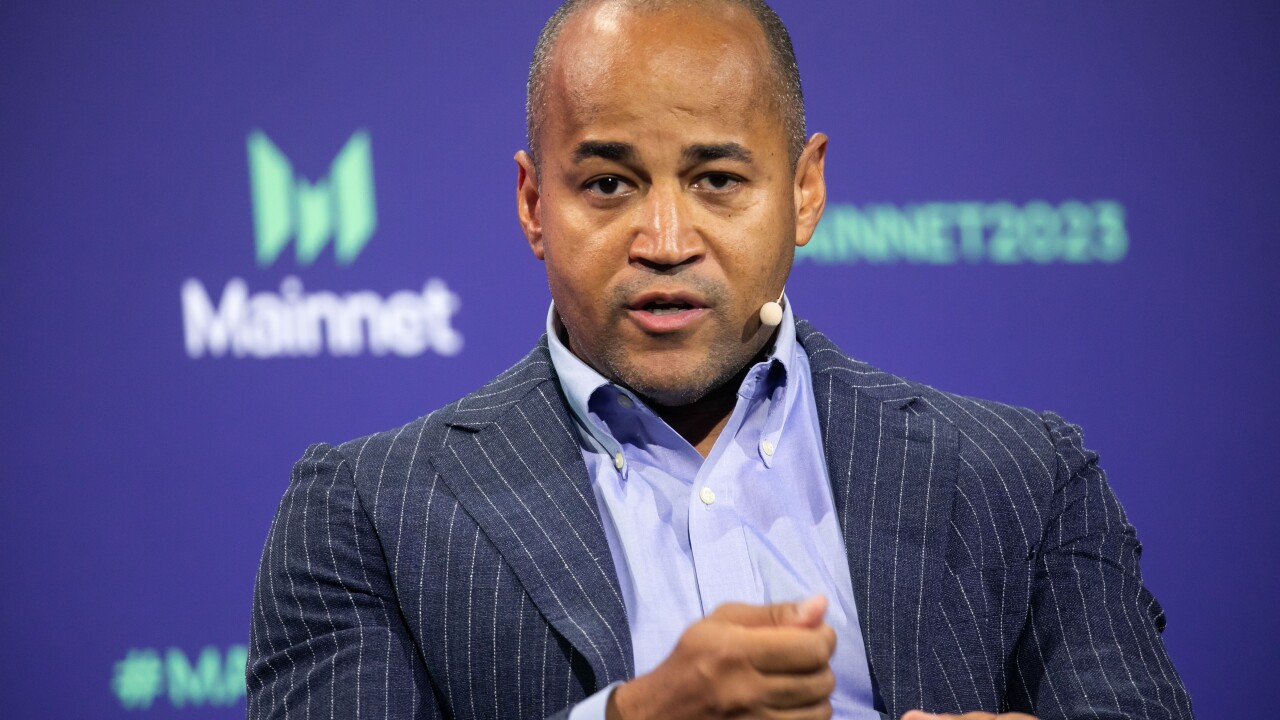CHICAGO -- There is no doubt Google, Apple, Amazon and others have
But the technology has a few challenges to resolve, especially as it makes its way into other machines on the Internet of Things (IoT) landscape, before it becomes a payment option that all banks, card companies and consumers fully trust, said Brian Crannell, senior vice president of business development at Chicago-based Knowles Electronics Corp., an audio technology developer.
"Payments through voice is going on now," Crannell said this week during the annual IoT Summit. "There is a financial industry voice biometrics standard that many financial institutions have agreed upon and there are a few people out there with solutions they believe are capable."

But, it could be up to two years before consumers see "the real first generation of payments being made through smart speakers and other devices," Crannell added. "There is some 'first generation' out there now, but it is not widespread."
Because the fundamental technology of a microphone, chip and payments software already exists, it is just a case of "getting it together in the ecosystem to the point that everyone will trust it," Crannell said.
That assessment falls in line with what most consumer and technology industry researchers are determining about the opportunity to advance
There is little concern that initiating voice-controlled tasks is simply a fad. Crannell estimates 1.5 billion smartphones are shipped every year, all of them being voice-enabled.
"Last year, Google reported that 20% of the searches on the phone were initiated through voice, and in the past year, that number has gone up to 70% being voice-activated," Crannell said. With an estimated 67 million Americans now using voice input for multiple tasks, it is time to move to the next level.
To get to that next level, one that would include payments, the technology has to improve its voice accuracy and handling of voice in different environments.
"The biggest challenge is that we are not always sitting in a quiet place when using voice commands," Crannell said.
Speech-in-noise recognition is getting better, but as IoT technology advances, consumers will want excellent voice controls in automobiles and on other machines.
"A car travels at different speeds, and the noise level is different at different speeds," Crannell said. "Also, where do you put a microphone in a car? You can't have air vents blowing on a microphone."
The noise factor would come into play if a driver was telling its voice control to locate the nearest Starbucks and order a coffee, Crannell added. "The variables in noise can make it hard for the virtual assistant to figure out that request."
IoT voice control may also have to move away from cloud technology that lacks the needed speed or bandwidth to handle certain tasks.
"If you are talking to someone and want do a voice-controlled search on your phone, it may take a few seconds and that is OK," Crannell said. "But if you are asking to turn off a light, or switch a song, or for a machine to make you a cup of tea, that needs to happen right away. The data having to go to the cloud and then coming back would not be ideal."
What sort of ubiquitous technology will be in place to assure that an appliance can order and pay for something it needs remains to be seen, but overall improvements to voice controls will be part of any advancements.
"Better voice understanding and advancements in or beyond the cloud will improve to the point where everyone is comfortable with it," Crannell said.





